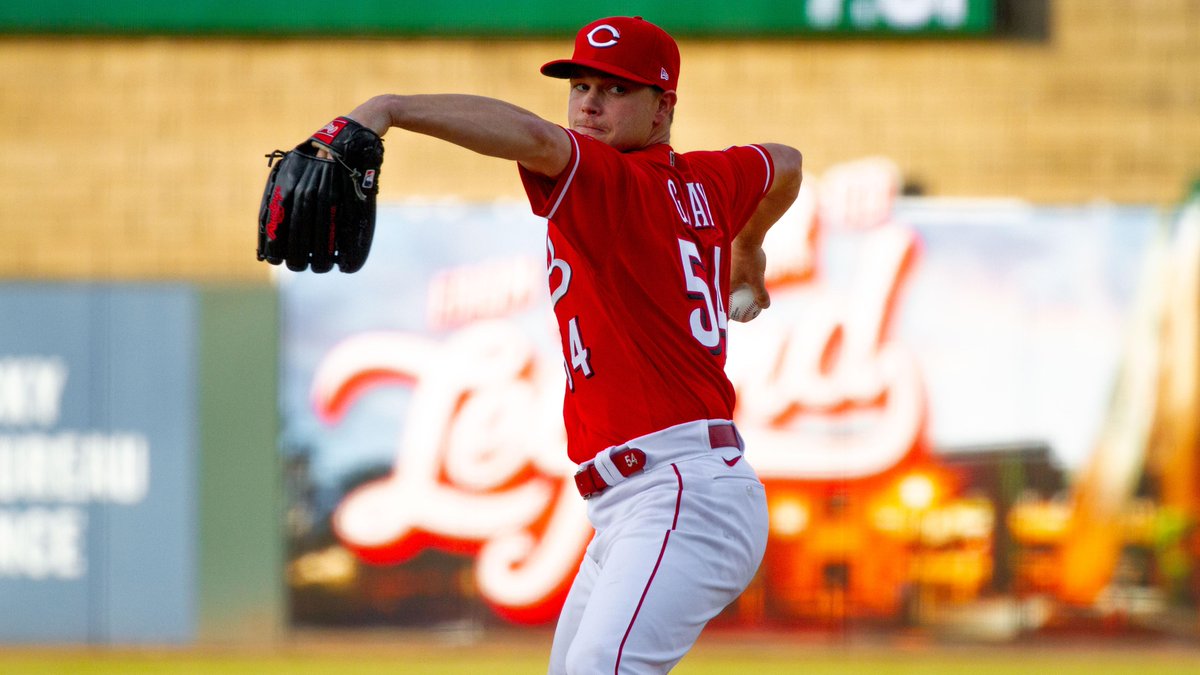
Sonny Gray takes the mound this afternoon for the Reds in his first start of the 2021 season. He missed two starts with back spasms that occurred toward the end of spring training. More on back spasms in a minute. Here’s a reminder of what Gray has done and what to expect from him this year.
Gray is entering the second year of the three-year extension he signed with the Reds. It pays him about $10.66 million a year. The club has a 2023 option to keep Gray. If the Tennessee-native keeps pitching like he has – a 5-WAR pitcher – paying $12.5 million will be a bargain. The Reds 2019 Opening Day starter figures to share the top of the rotation with Luis Castillo.
Misleading ERA Story
You could compare Sonny Gray’s ERA in 2019 (2.87) with his ERA in 2020 (3.70) and conclude he hadn’t pitched as well last year. And you’d be wrong.
In 2019, Gray benefited from a .255 BABIP (Batting Average on Balls In Play). That means he was about 4o points luckier than average given the quality of contact he surrendered and where balls landed. Pitchers don’t have much control – note, I didn’t say “no control” – over batted balls that land in play. The league’s BABIP has been around .295-.300 for years. An individual pitcher’s BABIP can vary quite a bit around that from year-to-year because the number of balls put in play for a single pitcher is too small to “even out” over just one season.
That’s why when you’re analyzing pitching, ignore ERA and skip to readily available better stats that remove that element of luck or defense from the evaluation. That simple move would have let you expect Gray’s ERA would likely go up in 2020. Take your pick, his 2019 FIP (3.40), xFIP (3.65), xERA (3.43) and SIERA (3.97) all pointed upward relative to his ERA. Lo and behold, that’s what happened when Gray’s BABIP returned to a near league norm of .290 in 2020.
Contact Quality
You might protest that maybe Gray “earned” that BABIP in 2019 by inducing poor contact quality. Indeed, the wee bit of control pitchers do have over their BABIP – and we’re talking a few percent at most – involves inducing poor quality contact through pitch velocity, pitch movement or deception. So maybe Gray’s .255 BABIP was real in that sense.
Nope. Independent measures of contact quality against Sonny Gray in 2019 point the other way. Batters actually had worse contact against the 31-year-old in 2020 than they did in 2019. His average exit velocity was down from 88.1 mph to 86.8. Same with his Barrel% and Hard Hit%. A couple contact quality stats (xBA, xwOBAcon) did point the other direction. But overall, you can’t conclude Gray’s success in 2019 was due to contact quality.
Fundamentals
Sonny Gray’s pitch fundamentals broke even in 2020. He improved his strikeout rate from 29 to 30.6%. But his walk-rate increased from 9.6% to 11.1%. That means his K%-BB% stayed about the same, going from 19.4% to 19.6%. League average for starters was 14.6%, so Gray is well above. Gray’s ground ball rate also stayed about the same, ticking up from 50.8% to 51.1%. League average was 43%.
When you control for the effects of BABIP and home run luck, Gray’s xFIP was a half-run better in 2020, falling from 3.65 to an outstanding 3.19. With respect to the league, Gray went from being 18% better than average in run production allowed in 2019 to 28% better in 2020. He finished ahead of teammate and N.L. Cy Young Winner Trevor Bauer in that metric.
Pitch Portfolio
In 2020, Gray bumped up his fastball percentage from 47 to 53%. But that counts his sinker. Gray was super effective throwing his fastball inside to left-handed hitters, starting it off the plate then moving it over for a strike. Here are a couple examples:
ff
ff
Gray also threw his curve a bit more, at the expense of his slider and changeup. Examples:
ff
ff
Gray is a fully registered citizen of #Spincinnati. His Curve and Slider spin-rates are in the top 10% and his fastball spin-rate in the top 15%.

Back Spasms
Gray hit the IL last September with a back strain and missed one start, returning to make two solid appearances the last week of the season. In one of those Gray struck out eight Brewers while walking only one in five innings.
Back spasms are common in every professional sport. They are episodes of sudden, short or prolonged painful cramping. Why are great athletes susceptible to them? Spasms are often the result of excessive stress on the supporting structures of the lower back caused by quick or repeated twisting. That sounds like pitching.
Gray described it this way a couple weeks ago: “My back just keeps spasming. It just keeps spasming when I rotate and when I throw,” Gray said. “Going through pitching and throwing is all fine. When I get on the mound and I really crank on it, it just kind of spasms up a little.”
A common remedy is stopping the activity that caused the strain. Often physical therapy or massage therapy helps.
Final Word
After losing Trevor Bauer to $40 million/year and Anthony DeSclafani, the Reds need Gray to fill the role he has the past two seasons. There’s a good chance he’ll do that.
Featured Image: https://twitter.com/Reds/status/1379507716419358724?s=20


